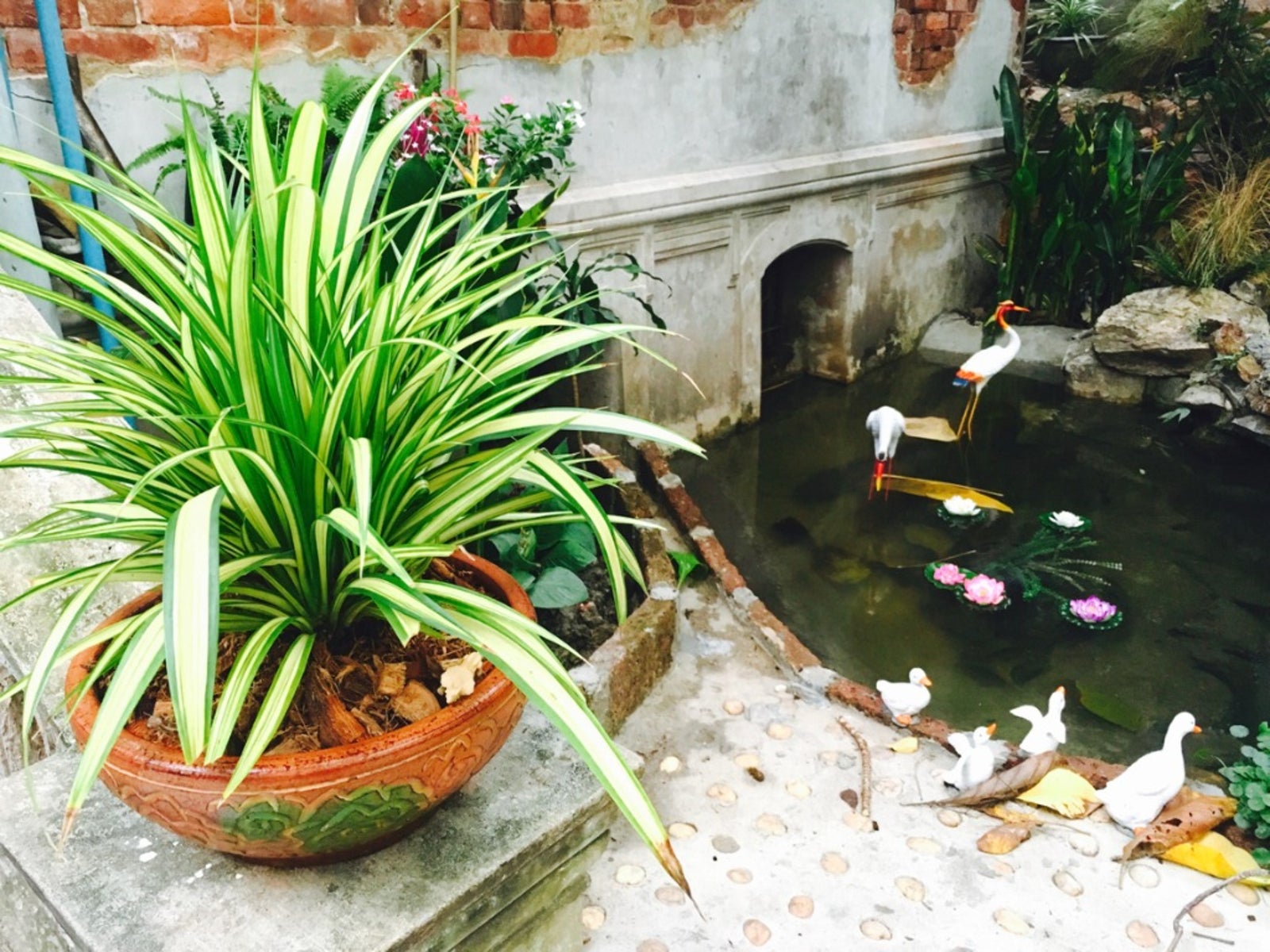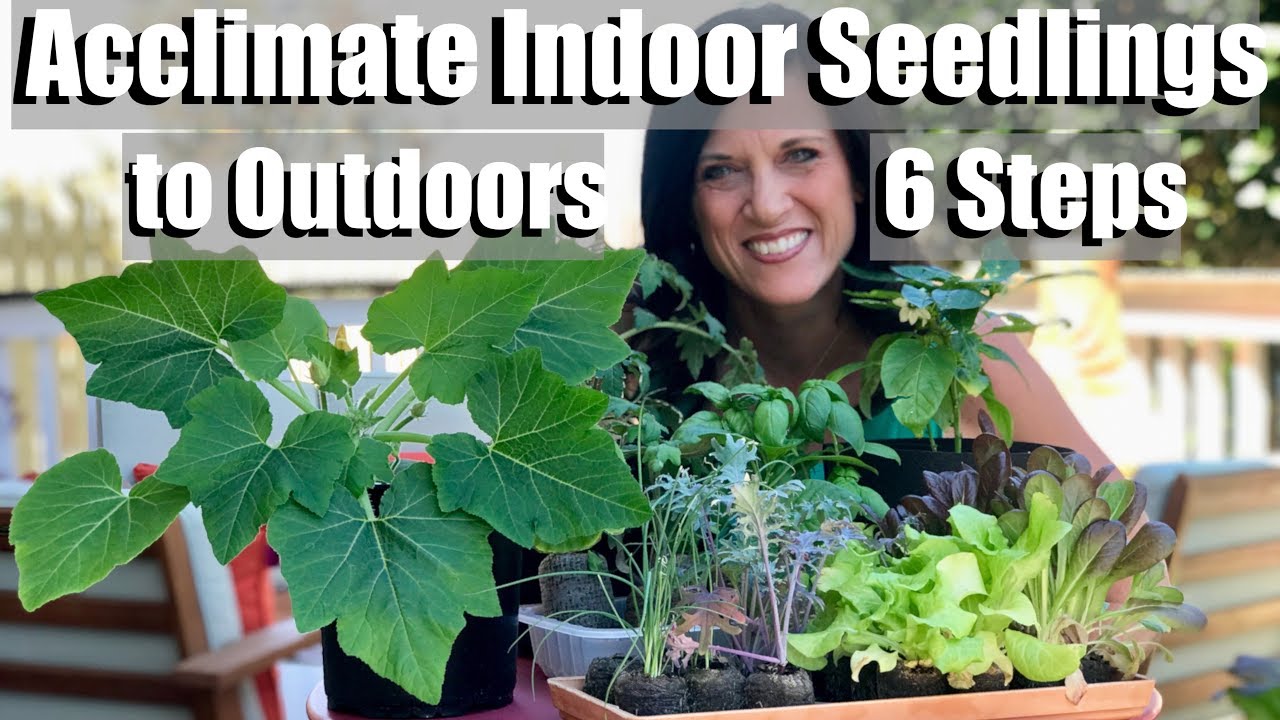As an Amazon Associate, I earn from qualifying purchases.
To acclimate plants to outdoors, gradually increase their exposure to sunlight and outdoor conditions over 7-10 days. Start with a couple of hours in a shaded spot.
Acclimating plants to outdoor conditions is crucial for their health and growth. Sudden changes in light, temperature, and wind can shock plants, causing stress and potential damage. By gradually introducing them to the outdoors, you help plants adjust and build resilience.
Begin by placing them in a shaded area for a few hours each day, then slowly increase their time outside. Over a week or two, move them to brighter spots and extend their outdoor time. This careful transition ensures your plants thrive in their new environment, reducing the risk of transplant shock.
Choosing The Right Time
Acclimating plants to the outdoors is crucial for their survival. The timing plays a vital role in ensuring plants thrive. Let’s explore the best timing strategies.
Seasonal Considerations
Seasons greatly affect plant acclimation. Spring and early summer are ideal for many plants. During these times, temperatures are mild. Avoid late summer or winter, as extreme temperatures can harm plants.
| Season | Temperature Range (°F) | Suitability |
|---|---|---|
| Spring | 50-70 | Highly Suitable |
| Early Summer | 70-85 | Suitable |
| Late Summer | 85-95 | Less Suitable |
| Winter | Below 50 | Not Suitable |
Ideal Weather Conditions
Weather conditions must be stable. Avoid windy or rainy days. Sunny days with light breezes are perfect. Ensure temperatures stay above 50°F but below 85°F.
- Sunny days: Provide adequate light for photosynthesis.
- Light breezes: Help strengthen plant stems.
- Consistent temperatures: Prevent plant shock.
Monitor weather forecasts closely. Sudden weather changes can stress plants.
Preparing Your Plants
Preparing your plants for the outdoors is crucial for their health. This process ensures they adapt well to the changing environment. Follow these steps for a seamless transition.
Hardening Off Process
The hardening off process helps plants adjust to outdoor conditions. It involves gradually exposing plants to the outside world.
- Start indoors: Begin by placing your plants near an open window.
- Move to shade: After a few days, move them to a shaded outdoor area.
- Increase sunlight: Gradually increase their exposure to sunlight each day.
- Monitor weather: Protect them from extreme weather during this phase.
Gradual Exposure
Gradual exposure is key to acclimating your plants. This step-by-step approach minimizes stress on the plants.
- Day 1-3: Place plants outdoors for 1-2 hours in the shade.
- Day 4-6: Increase the duration to 3-4 hours, still in the shade.
- Day 7-9: Expose them to morning sun for 3-4 hours.
- Day 10-12: Gradually extend sunlight exposure to 5-6 hours.
Use a table to track your plant’s exposure schedule:
| Day | Exposure Time | Light Condition |
|---|---|---|
| 1-3 | 1-2 hours | Shade |
| 4-6 | 3-4 hours | Shade |
| 7-9 | 3-4 hours | Morning Sun |
| 10-12 | 5-6 hours | Morning Sun |
By following this schedule, your plants will thrive outdoors.
Monitoring Weather Changes
Monitoring weather changes is crucial when acclimating plants to the outdoors. By keeping an eye on the weather, you can ensure your plants thrive. Let’s explore how to handle temperature swings and unexpected frost.
Temperature Swings
Temperature swings can stress your plants. Daytime heat and nighttime chill can be harmful. Use a thermometer to track the temperature. Aim to keep plants in a range they can tolerate.
If temperatures dip too low, bring plants inside. When it gets too hot, provide shade. Create a plan to protect your plants from extreme changes. Consistent monitoring helps you react quickly.
Unexpected Frost
Unexpected frost can be deadly for outdoor plants. Frost can damage leaves and roots. Always check the weather forecast. Cover your plants with a blanket or cloth if frost is predicted.
Move potted plants indoors during frost warnings. Use mulch to insulate the soil. Keep your plants safe from sudden cold snaps. Proper planning helps avoid frost damage.

Credit: www.reddit.com
Protecting Young Plants
Young plants are delicate and need special care when moved outdoors. They face threats from wind, pests, and weather. Ensuring their safety is crucial for their growth. Here are some methods to protect your young plants.
Using Row Covers
Row covers are lightweight, breathable fabrics. They shield young plants from pests and harsh weather. These covers let light and water through but block insects. To use them, drape the cover over your plants. Secure the edges with soil or stones.
Benefits of Row Covers:
- Protects from insects and birds.
- Helps maintain humidity and warmth.
- Reduces the risk of frost damage.
Row covers are easy to install and remove. They are reusable and cost-effective.
Creating Wind Barriers
Wind barriers protect plants from strong winds. These barriers reduce wind speed and prevent damage. You can use natural materials or garden structures to create them.
Types of Wind Barriers:
| Barrier Type | Materials | Benefits |
|---|---|---|
| Natural | Bushes, trees, hedges | Blends with the garden, provides habitat for wildlife |
| Artificial | Fences, screens, netting | Easy to install, customizable height |
To create a wind barrier, place it on the windward side of your garden. Ensure it is tall enough to block the wind effectively. Regularly check and maintain your barriers to keep them effective.
Watering Techniques
Acclimating plants to the outdoors requires careful attention to watering techniques. The right approach ensures plants thrive in their new environment. Let’s explore how to adjust your watering schedule and prevent overwatering.
Adjusting Watering Schedule
Plants need different water amounts indoors and outdoors. Indoor plants get less light and wind, requiring less water. Once outside, they face more light and wind, increasing water needs. Gradually extend the time between waterings for a smooth transition.
Here’s a simple schedule:
| Week | Watering Frequency |
|---|---|
| 1 | Every 2 days |
| 2 | Every 3 days |
| 3 | Every 4 days |
| 4 | Weekly |
Preventing Overwatering
Overwatering can harm plants quickly. Check soil moisture before watering. Stick your finger 2 inches into the soil. If it feels dry, water the plant. If it’s still moist, wait another day.
- Use pots with drainage holes.
- Remove excess water from saucers.
- Water in the morning for optimal absorption.
Signs of overwatering include yellow leaves and root rot. If you notice these signs, reduce the watering frequency. Adjusting the watering schedule and preventing overwatering are crucial steps in acclimating plants to the outdoors.

Credit: www.youtube.com
Soil Preparation
Preparing the soil is the first step to acclimate plants outdoors. Healthy soil provides nutrients and proper drainage for plants. Below are steps to ensure your soil is ready for new plants.
Testing Soil Quality
Testing soil quality is crucial. Use a soil test kit from a garden store. Follow these steps:
- Collect soil samples from different garden spots.
- Mix the samples in a clean container.
- Follow the test kit instructions.
The test results show your soil’s pH and nutrient levels. Ideal pH for most plants is between 6.0 and 7.0. Adjust the pH if needed.
Amending Soil
Amending soil improves its quality and structure. Add organic matter like compost or manure. This helps soil retain moisture and nutrients. Follow these steps:
- Spread a 2-3 inch layer of compost over your soil.
- Use a garden fork to mix the compost into the top 6-8 inches of soil.
For clay soil, add sand or gypsum to improve drainage. For sandy soil, add peat moss to help retain moisture. Here’s a simple table for quick reference:
| Soil Type | Amendment | Purpose |
|---|---|---|
| Clay | Sand, Gypsum | Improve drainage |
| Sandy | Peat Moss | Retain moisture |
| Loamy | Compost | Boost nutrients |
Ensure the soil is loose and crumbly. This makes it easier for plant roots to grow.
Pest And Disease Management
Acclimating plants to the outdoors means facing new challenges. One of the biggest challenges is dealing with pests and diseases. This section will guide you on how to manage these effectively.
Identifying Common Pests
Knowing the common pests in your area is essential. Here are some pests you may encounter:
- Aphids: Small, sap-sucking insects that can weaken plants.
- Spider Mites: Tiny arachnids that cause yellow spots on leaves.
- Whiteflies: Small white insects that can cause leaf drop.
- Slugs and Snails: Mollusks that chew on leaves and stems.
- Caterpillars: Larvae that can eat large portions of leaves.
Natural Pest Control Methods
Using natural methods is better for the environment and your plants. Here are some effective ways:
- Neem Oil: Spray neem oil on plants to deter pests.
- Soap Water: Mix water and mild soap to spray on plants.
- Companion Planting: Grow plants that repel pests next to your plants.
- Handpicking: Remove pests by hand if there are only a few.
- Beneficial Insects: Introduce ladybugs or lacewings to eat harmful pests.
Here’s a table to summarize some natural pest control methods:
| Method | How It Works | Best For |
|---|---|---|
| Neem Oil | Repels and kills pests | Aphids, Whiteflies |
| Soap Water | Breaks down pest membranes | Aphids, Spider Mites |
| Companion Planting | Repels pests naturally | General pests |
| Handpicking | Physically removes pests | Slugs, Caterpillars |
| Beneficial Insects | Eat harmful pests | Aphids, Spider Mites |

Credit: www.gardeningknowhow.com
Long-term Care
Long-term care for your plants is essential for their health and longevity. After acclimating your plants to the outdoors, ensure they thrive with consistent care. This involves regular inspections and seasonal maintenance to address their evolving needs.
Regular Inspections
Conducting regular inspections helps identify issues early. Look for signs of disease, pests, or nutrient deficiencies. Check leaves for discoloration or spots. Examine stems for any unusual growths or damage. Inspect the soil moisture to ensure it’s not too dry or waterlogged.
- Weekly Inspections: Check for pests and diseases.
- Monthly Inspections: Evaluate soil health and plant growth.
Seasonal Maintenance
Seasonal maintenance keeps your plants healthy year-round. Adjust care practices based on the season. In spring, focus on pruning and feeding. In summer, ensure adequate water and shade. During fall, prepare plants for cooler temperatures. In winter, protect them from frost.
| Season | Care Tips |
|---|---|
| Spring | Prune dead branches, fertilize, and repot if needed. |
| Summer | Water regularly, provide shade, and check for pests. |
| Fall | Reduce watering, clean up debris, and mulch. |
| Winter | Protect from frost, reduce watering, and use covers. |
By following these long-term care practices, your plants will flourish. Regular inspections and seasonal maintenance are key to their success.
Frequently Asked Questions
What Is Plant Acclimation?
Plant acclimation is the process of gradually exposing indoor plants to outdoor conditions. This helps them adjust and thrive in their new environment.
How Long To Acclimate Plants?
Acclimate plants over 7-10 days. Gradually increase their exposure to sunlight and outdoor conditions each day.
Why Acclimate Plants To Outdoors?
Acclimating plants prevents shock and sunburn. It ensures they adapt smoothly to changing light, temperature, and humidity.
When To Start Acclimating Plants?
Start acclimating plants in the spring. This season offers mild temperatures and less intense sunlight, ideal for adjustment.
Conclusion
Acclimating plants to the outdoors ensures their healthy growth and resilience. Gradually increase their exposure to sunlight and wind. Monitor their progress and adjust as needed. This careful transition helps plants thrive in their new environment. Follow these steps to enjoy a lush, vibrant garden all season long.

